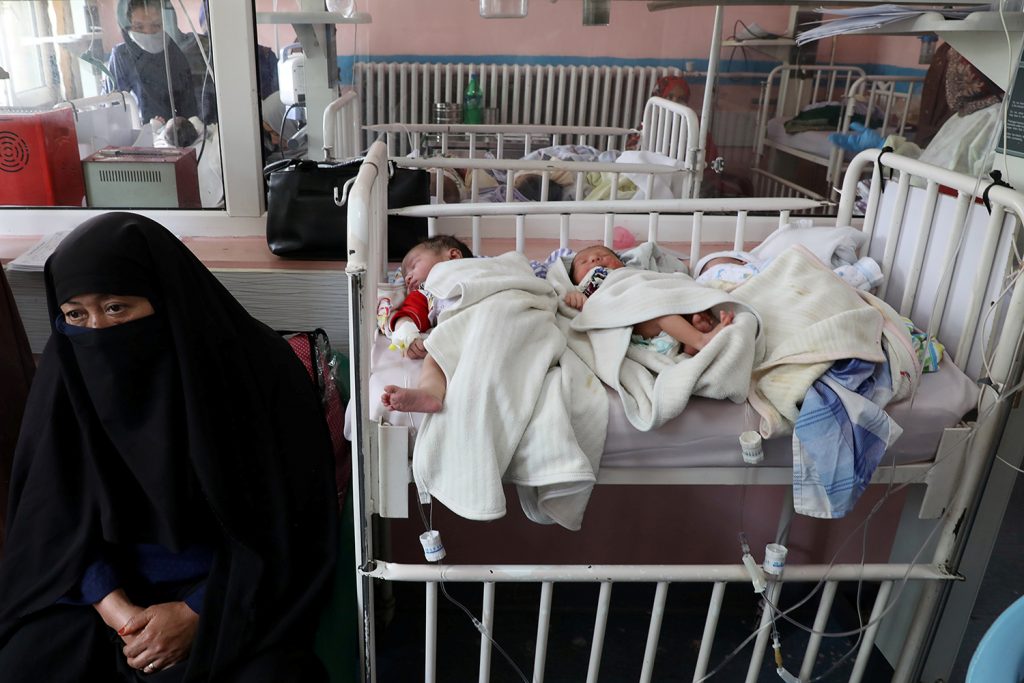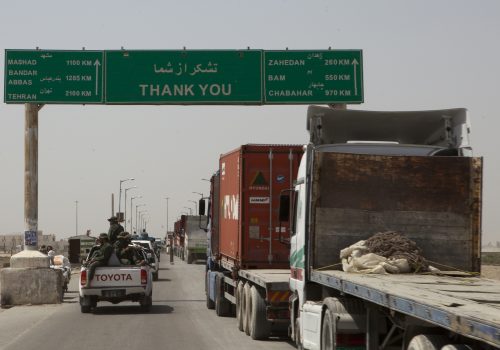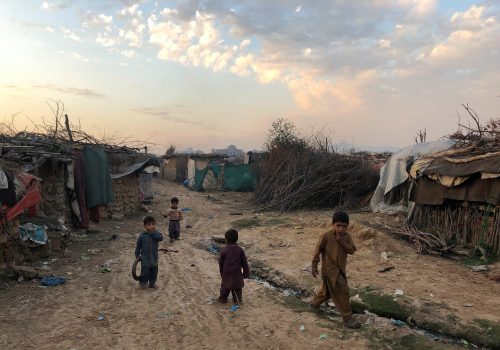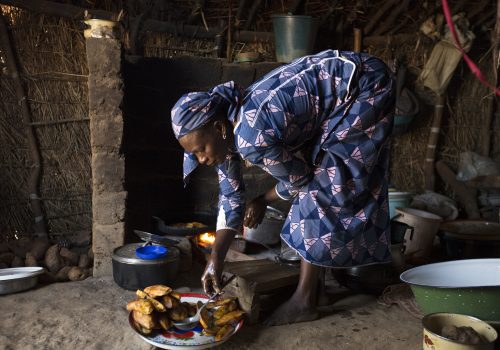Maternal health is a window into the widespread socioeconomic fault lines of Afghanistan. The US invasion and subsequent conflict there has undermined maternal health, limited the accessibility and quality of maternal healthcare, and created serious generational trauma in the form of undesired pregnancies and mental health disorders. Decades of foreign intervention and civil war have destroyed healthcare infrastructure, while the lingering neocolonial patriarchal society and Taliban fear tactics have limited access to necessary sexual health education.
Developing a sustainable maternal healthcare system is an integral step to achieving transformative justice for Afghan women and for the development of Afghanistan’s social institutions amid the ongoing peace process. A multisectoral approach is required to sustain responsible governmental, international, and regional coordination to create educational programs centered around the sexual and reproductive health of women and to initiate systemic action to reverse the ability of male-centric structures to withhold reproductive healthcare.
Healthcare infrastructure
Afghanistan suffers from the absence of government institutions supporting healthcare, which is felt especially hard in maternal healthcare. The Afghan region of Badakhshan recorded the highest maternal mortality ratio in history in 2001. The nexus between maternal health, mental health, and non-communicable diseases goes unnoticed in the Ministry of Public Health’s Basic Package of Health Services (BPHS), leading pregnant Afghan women to suffer high rates of postpartum depression and infections.
The overdependence on international non-governmental organizations (INGOs) also contributes to Afghanistan’s faltering healthcare infrastructure. INGO funding can often be short-term and ephemeral, and when it disappears, it often leaves behind a healthcare system with no other form of financial support and exacerbates the incoordination of women’s healthcare at the provincial and national level. In the long term, service delivery should not depend on INGOs but rather the Ministry of Public Health and domestic partners. While INGOs have been the main source of immediate healthcare relief in the form of service delivery, this temporary relief cannot sustain poor government healthcare services and the development of local services has been severely stunted. While one cannot downplay the importance of NGO emergency relief, structural change for Afghanistan will only materialize once the government invests more in its own healthcare framework and reduces its dependency on emergency INGO service delivery.
Hospitals and clinics outside of Kabul are given even less resources and aid. Deficiencies in antenatal care (ANC), delivery assistance by skilled birth attendants (SBA), and utilization of postnatal care (PNC) have led to maternal health coverage blackouts within the outermost provinces. Afghanistan’s lack of accessibility and quality of care jeopardizes the safety of labor procedures for pregnant women as well as access to STD screening and abortion capacity, which is the backbone of women’s rights in the Global South.
Policy recommendations for healthcare infrastructure: In order to catalyze true transformative justice in Afghanistan, the Afghan government ought to implement a multisectoral approach with women at the forefront to improve the social determinants of health. Namely, this must include cross-coordination between the Ministry of Public Health and higher education, which is imperative to prioritizing maternal health educational resources and preparing hospitals for the unique challenges women face. The development of a sustainable healthcare infrastructure is critical to reduce dependence on INGOs and is only attainable with the subsidization of costs and substantial investment from the international community. This investment should be in the form of a consistent monitoring and evaluation system that has the technological capacity to link all local NGOs, healthcare providers, and facilities. As such, even if INGO relief dwindles, there will be an internationally-supported domestic network in place ensuring a consistent flow of patient care. This is only possible via investment in Afghan NGOs as well as in Afghanistan’s actual healthcare system.
After two decades of armed conflict, Afghanistan’s medical infrastructure and healthcare workers have been caught in the crossfire. As such, the United States and its allies have a responsibility to invest in organizations supporting local infrastructure that would tangibly improve Afghan lives. The Community Midwifery Education Initiative (CMEI) is an example of a localized program that needs investment to train local women to become midwives and provide comprehensive maternal healthcare. Investing in local infrastructure ensures long-term wellness for women and overall development of Afghan social institutions. In addition, Central and South Asian actors—namely Pakistan—may be more effective in supporting Afghanistan’s local talent within its own healthcare system. Pakistan’s efforts to facilitate Afghanistan’s stabilization could perhaps include capacity building programs administered by Pakistani maternal medical professionals, helping to harness women’s empowerment.
Sexual education and empowerment
Limited access to sexual education has for decades disproportionately impacted women’s wellness at the cost of their safety. True transformative justice for Afghan women cannot come without sexual and reproductive health literacy for all Afghans. With the exception of abortion, there is no formal legislation outlawing the use of birth control, including contraceptives. Contraceptive availability and usage, however, varies by province depending on the family planning educational programs available. Typically, male mullahs in the rural and more conservative provinces tend to oppose the implementation of family planning and sexual literacy programs, making women there even more vulnerable. Scarce sexual education has impeded awareness around contraceptives and family planning, which directly hinders improved birth spacing and seeking out a skilled birth attendant to postpone pregnancies with premature pelvic development and reducing the perils associated with high parity pregnancies.
Policy recommendations for sexual education: Afghan men and women are entitled to sexual and reproductive health resources, as they have a right to protect their bodies and empower themselves in the spirit of restorative justice and reclaiming their sexual rights. Streamlined access to sexual education and female presence in obstetrics and gynecology are essential for improving family planning and reproductive health services. An estimated thirty three percent of maternal deaths could be prevented annually if women had assured access to contraceptives and maternal health resources. As women gain access to educational resources, they readily seek out necessary prenatal care to prevent obstetric emergencies that typically harm maternal health. Female health professionals are ideal facilitators of trust in sexual education, urging investment in community midwifery centers, especially those in the outermost provinces of Afghanistan. Access to family planning and reproductive health services is critical to improve and uplift the lives of hundreds of thousands of Afghan women and children.
Neocolonial derived patriarchy and Taliban fear tactics
Complicit in sustaining an imperialist system inherited from the colonial British, the Soviet Union, and the United States, Afghan men have derived power from family honor codes, which allows them to dominate political positions, tribal councils known as Jirgas, and family units. Husbands in particular often restrict women from attaining maternal care from a proper healthcare facility. In addition, Afghan women are traditionally prevented from visiting healthcare facilities if there are no female staff, especially in cases related to fertility and reproductive health. The status of a woman’s right to maternal healthcare is thus not only limited by availability and affordability, but also by social norms and whether treatments are sensitive to cultural and religious beliefs. These very codes perpetuate practices of early marriage, honor killings, and bride kidnappings, enforcing gender violence and structural injustice for women throughout their lives.
While the state of maternal health was already crippled under the Taliban emirate’s mangled understanding of women’s rights in Islamic and ethnic contexts, the US invasion escalated violence and enshrined male-dominated power structures, heightening women’s apprehension to seek reproductive care. Despite the Taliban’s consistent record of egregious attacks on healthcare workers and facilities, the introduction of US and NATO troops has led to an uptick in violent confrontations with the Taliban, now engendering hostility towards any healthcare facility associated with externally supported medical care. Concurrently, the United States victimized the archetype of the Afghan woman to justify sustained bombing campaigns which disproportionately killed and injured more women. Despite increased humanitarian aid from the United States, the uptick in violence has caused INGO-operated maternity wards to close their doors out of concern for hospital staff safety, further restricting healthcare access for women.
At the outset of the US intervention in Afghanistan, coverage rates for reproductive, maternal, and child care improved. Twenty-one of the thirty-four provinces witnessed twenty-percent increases in the percentage of women cared for by a skilled birth attendant from pre-US intervention levels. Yet, these gains remain unequally distributed, particularly for the more remote and poor provinces controlled by the Taliban. Moreover, experts in maternal mortality assert that the enormous declines in maternal mortality after the US-led invasion reported by USAID are improbable. As such, even with US intervention, maternal care outreach endures serious threats in Taliban controlled and contested regions with reproductive empowerment out of reach for women living in these areas.
Despite some maternal health indicators improving under US humanitarian aid, the highly patriarchal set of systems and ideologies brought on by the United States in an attempt to stabilize the country produced an unhealthy dichotomy between modernists and religious-based traditionalists, in additionto enabling existing local attitudes about gender and power. After the US and NATO-sponsored Bonn agreement to initiate Afghanistan’s rebuilding, Pashtun women, especially in Northern Afghanistan, suffered from the trauma of sexual violence at the hands of tribal warlords empowered by the fall of the Taliban. Although the United States boasted its defeat of the Taliban’s formal gender repressive policies, it fails to acknowledge the gender apartheid it nurtured as it empowered the pre-existing gender attitudes of warlords of the Northern Alliance to co-opt political processes and introduced the narrative of a sexually empowered woman being incompatible with Afghan and Islamic traditions.
Policy recommendations for patriarchal norms: Male leadership can no longer stand in the way of sexual empowerment and literacy for women and should abdicate more roles in government and local institutions to women. A significant step in this process would be the complete overhaul of the healthcare system to be geared toward women’s health initiatives, led by revolutionary women and organizations like RAWA, as active participants rather than a western token. In order to circumvent reproductive coercion and backlash from jirgas, shuras—committees that largely influence community-wide health initiatives—can and must advocate for the participation of midwives to disseminate preventative health information. Although contraceptive use may need to be normalized, men must re-evaluate their role in sex and, as beneficiaries of a global power-structure in which women are objectified and violated by male sexual ego, transform their perceptions of the sexual rights of women. As such, co-educational programs are critical for men and women to unlearn the fallacies surrounding women’s health and family planning. In order to target the complicity of men, educational programs must tap into radical social revolution, forcing them to reconsider the harms they have unintentionally or intentionally caused to women’s hygiene, sexual health, and wellness.
A severely under-supported foundation for adequate maternal care calls for more international and domestic investment and greater emphasis on sexual education. At the same time, informal and formal patriarchal structures need to be demolished to neutralize the threats women face in every aspect of their existence, including their right to healthcare. In order to attain equality for every Afghan citizen, it is imperative that Afghan women are centered at every conversation to defuse a system riddled with male ego.
Shariq Farooqi was an intern in the Atlantic Council’s South Asia Center.
Further reading:
Image: Newborn children who lost their mothers during an attack lie on a bed at a hospital, in Kabul, Afghanistan May 13, 2020. REUTERS/Omar Sobhani



